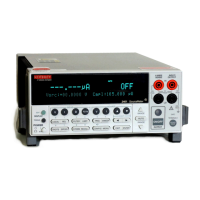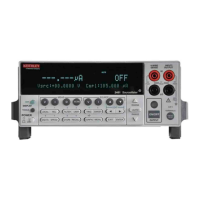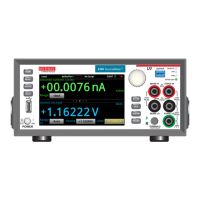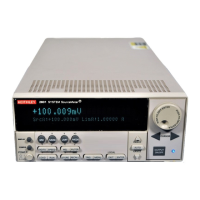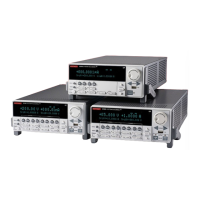If Interlock is set to O and the safety interlock signal is not
asserted, the following occurs:
• The nominal output is limited to less than ±42 V.
• The front-panel INTERLOCK indicator is not illuminated.
• You can output voltages less than ±42 V.
If Interlock is set to On, when the safety interlock signal is
not asserted, the following occurs:
• You cannot turn on the source output for any voltage.
• The front-panel INTERLOCK indicator is not illuminated.
• Whenever the interlock changes state (from asserted to
not asserted or vice versa), the output is turned o.
To change the Interlock setting:
1. From the front panel, select MENU.
2. Select Source Settings.
3. Set Interlock to ON or OFF.
If you try to assign a high-voltage output and turn the source
on when the interlock is not asserted, you see event code
5074, “Output voltage limited by interlock.” Note that the
SOURCE swipe screen displays the value that is selected for
the voltage source, but the output voltage is limited to ±42 V.
An interlock circuit is provided on the rear panel of the
instrument, as shown in the following gure. This circuit must
be closed to enable the 2460 to produce voltages greater
than ±42 V.
Interlock
connection
The interlock is intended for use through a normally open
switch, which may be installed on the lid of a test xture, on
the enclosure of a semiconductor prober or device handler,
or on the door or doors of a test equipment rack. The circuit
opens when an access door is opened and closes when the
door is closed.
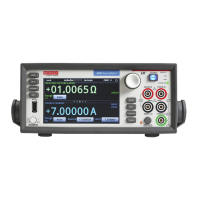
